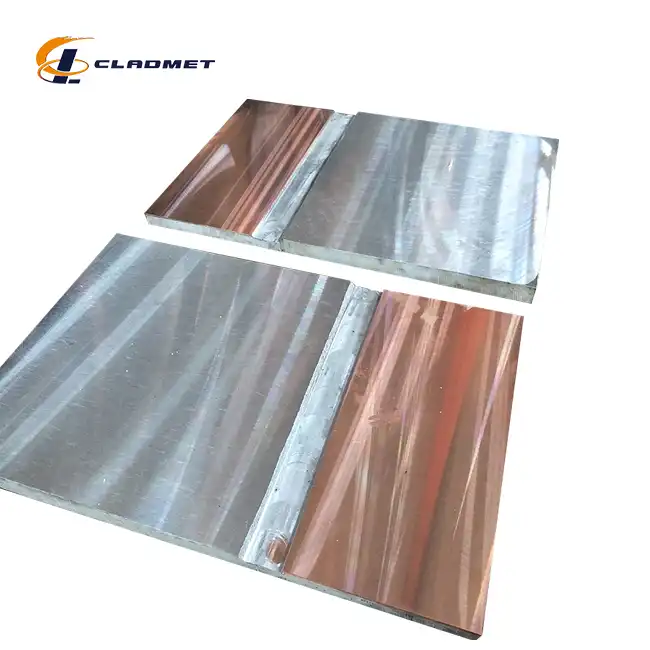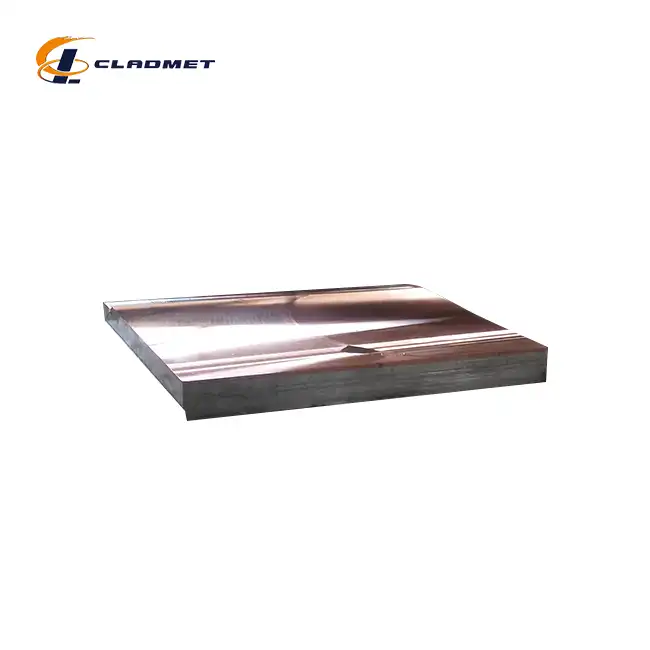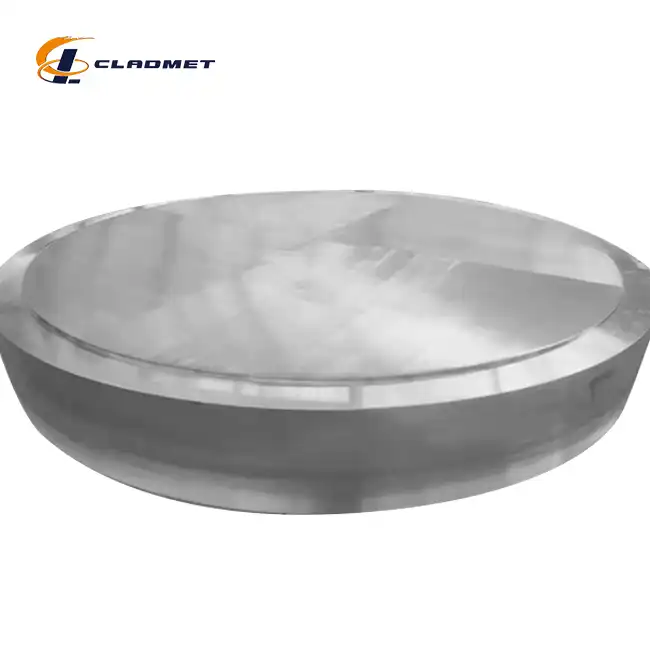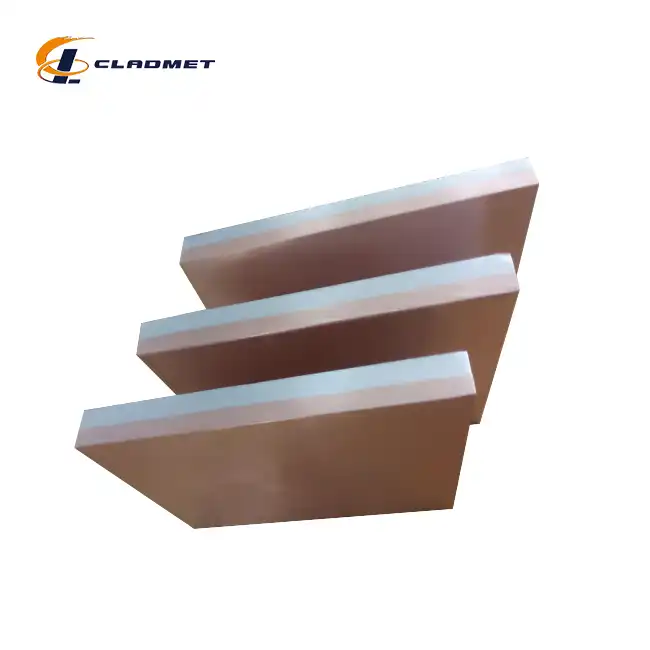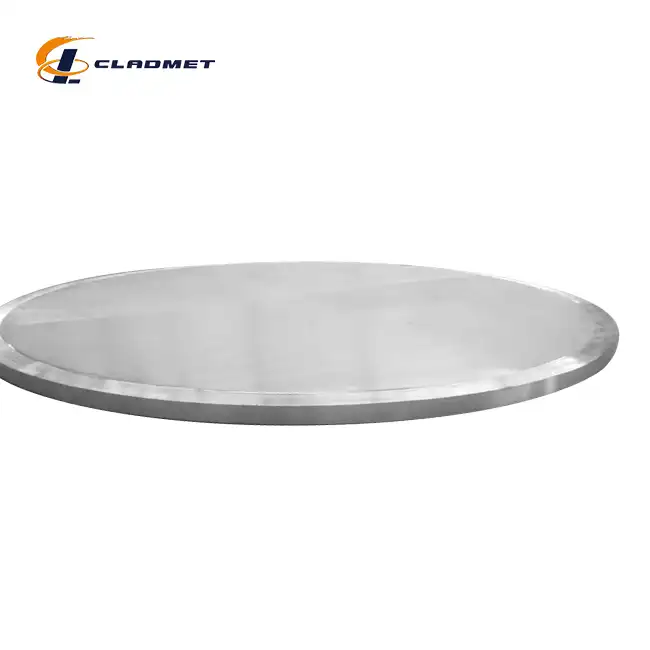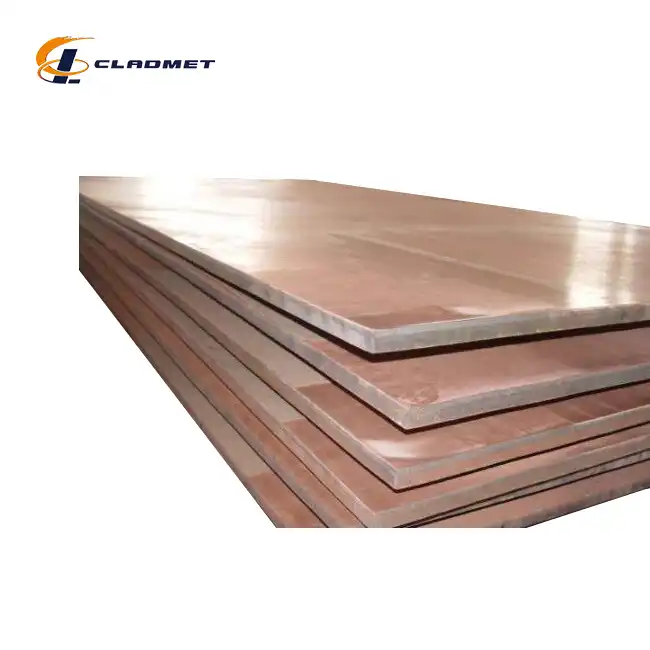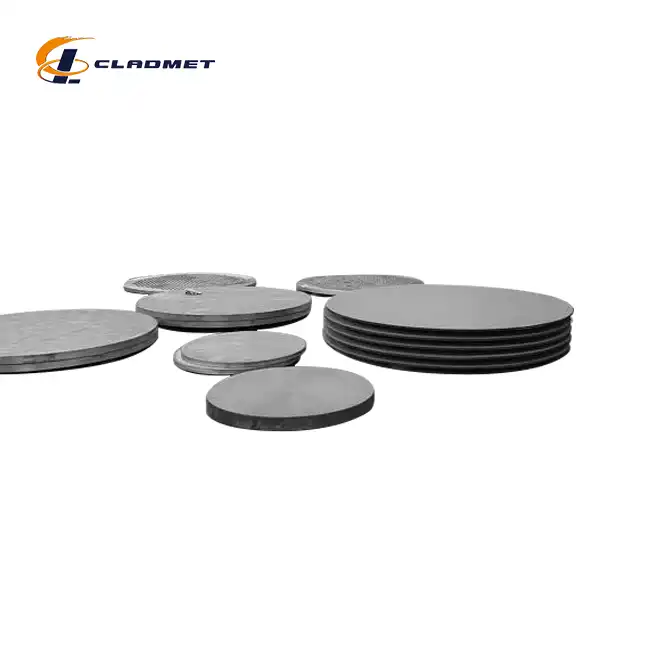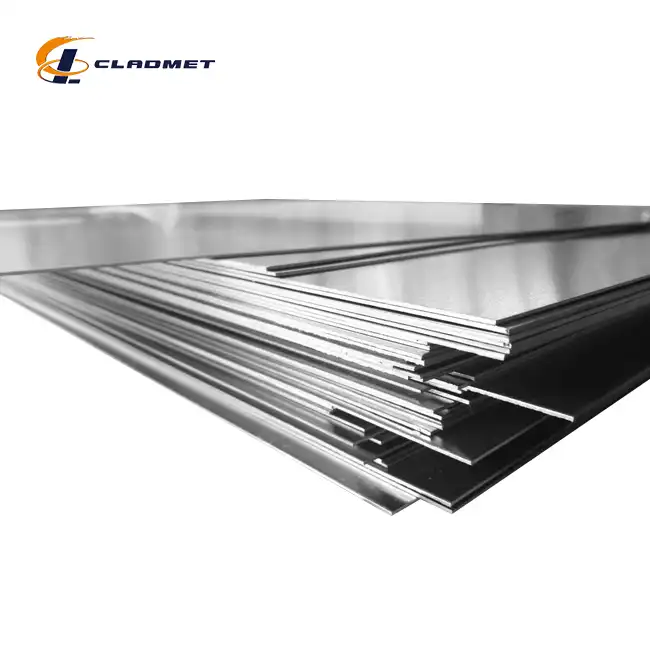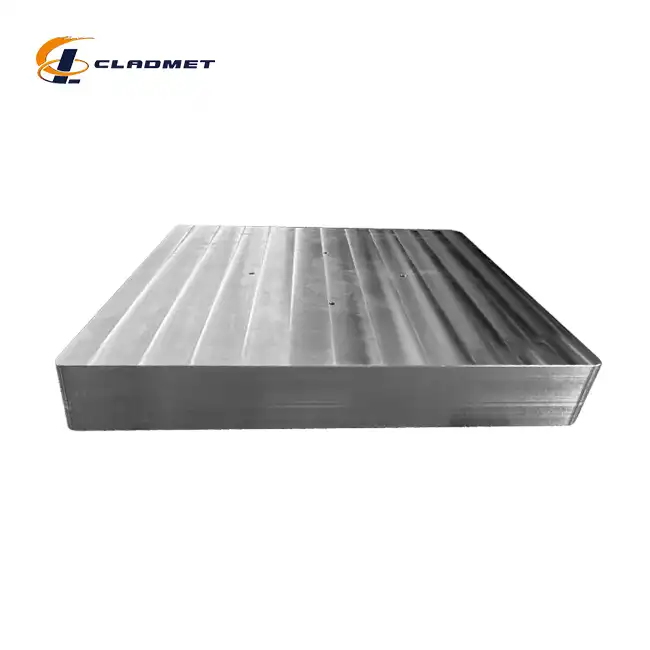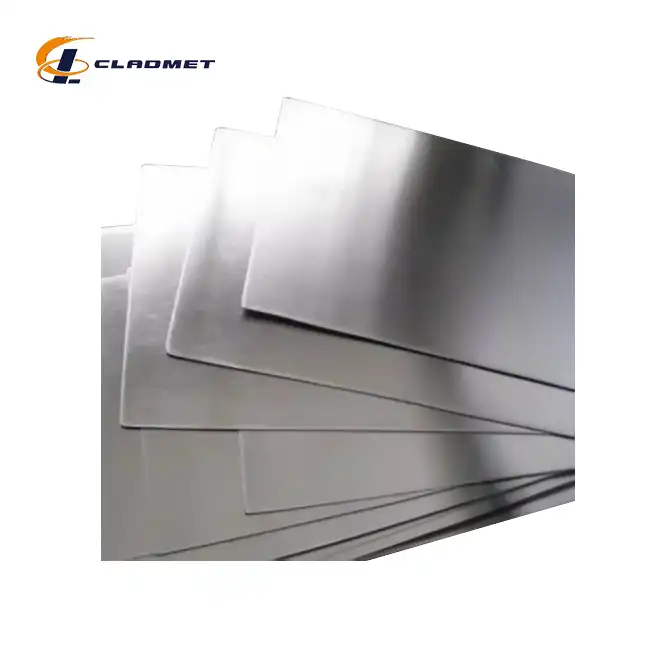What are the advantages of copper-clad plates?
 2025-02-18 16:29:36
View:389
2025-02-18 16:29:36
View:389The world of industrial materials has witnessed remarkable advancements in recent years, with copper-clad plates emerging as a cornerstone of modern manufacturing and engineering applications. These innovative composite materials combine the exceptional electrical conductivity of copper with the robust mechanical properties of various base metals, creating a versatile solution for diverse industrial needs. As industries continue to evolve and demand more sophisticated materials, copper clad plates have proven themselves invaluable across sectors ranging from electronics to marine engineering, offering an optimal balance of performance, durability, and cost-effectiveness.
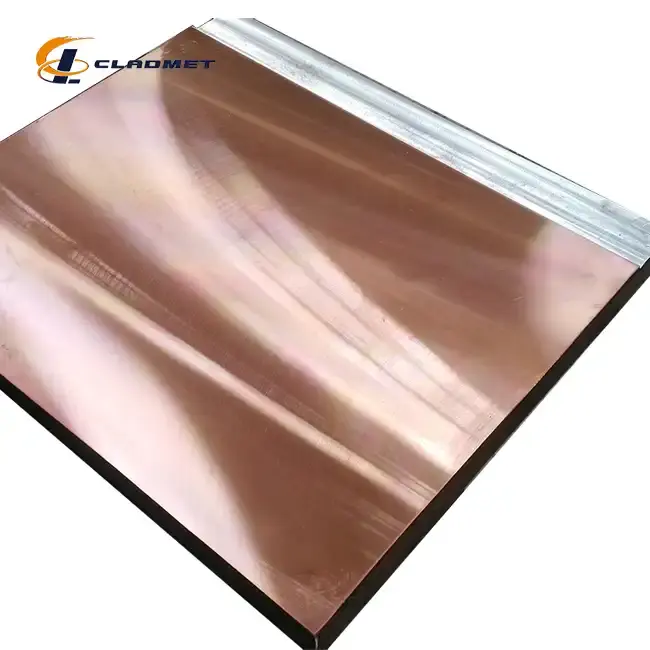
Superior Performance Characteristics of Copper-Clad Plates
Unparalleled Electrical Conductivity
Copper clad plates represent a breakthrough in electrical applications, offering exceptional conductivity that makes them indispensable in power generation and distribution systems. The copper layer, typically maintaining a purity level of 99.9% or higher, ensures optimal electrical performance while the base metal provides structural integrity. These plates excel in applications requiring precise electrical current distribution, such as switchgear components and busbar systems. The combination of high conductivity with mechanical strength allows for reduced material thickness without compromising performance, leading to more compact and efficient electrical installations. Modern manufacturing techniques ensure consistent conductivity across the entire surface area, making these plates particularly valuable in high-precision electrical applications where uniform current distribution is crucial.
Enhanced Thermal Management Properties
The thermal management capabilities of copper clad plates set them apart in applications requiring efficient heat dissipation. The copper layer's superior thermal conductivity, combined with the structural support of the base material, creates an ideal solution for heat exchanger components and cooling systems. In industrial settings, these plates demonstrate exceptional performance in managing thermal loads, particularly in chemical processing equipment where temperature control is critical. The uniform bonding between copper and base materials ensures consistent heat distribution, preventing hot spots and thermal stress concentrations that could compromise system integrity. This characteristic makes them particularly valuable in applications where thermal cycling and high-temperature operations are common.
Outstanding Mechanical Durability
The mechanical properties of copper clad plates represent a perfect synthesis of strength and functionality. Through advanced bonding technologies, including explosive bonding and roll-bonding processes, these plates achieve remarkable mechanical integrity. The base metals, typically steel or aluminum, provide the fundamental strength, while the copper cladding adds functionality without compromising structural stability. This combination results in materials that can withstand high pressure, mechanical stress, and severe operating conditions while maintaining their essential electrical and thermal properties. The durability extends to resistance against mechanical wear, impact, and vibration, making these plates ideal for demanding industrial environments where reliability is paramount.
Manufacturing Excellence and Quality Control
Advanced Production Technologies
The manufacturing of copper clad plates involves sophisticated processes that ensure optimal bonding between materials. The explosive bonding method, a cornerstone of high-quality production, creates an exceptionally strong metallurgical bond through controlled detonation. This process begins with meticulous surface preparation, where both the copper and base materials undergo thorough cleaning and precise alignment. The explosive charge is carefully calculated and positioned to generate the perfect pressure wave that creates an atomic-level bond. This technology ensures superior bond strength and uniform properties across the entire plate surface, meeting the most stringent industry requirements for structural integrity and performance reliability.
Precision Quality Assurance
Quality control in copper clad plate production involves comprehensive testing protocols that exceed international standards. Each plate undergoes rigorous inspection using advanced non-destructive testing methods to verify bond integrity and material properties. The testing regime includes ultrasonic scanning to detect any potential delamination or bonding defects, along with mechanical testing to ensure strength and durability. Surface finish quality is carefully monitored through advanced measurement techniques, ensuring compliance with customer specifications. The quality assurance process also includes chemical analysis to verify material composition and purity levels, particularly crucial for applications in sensitive industries like chemical processing and marine engineering.
Customization Capabilities
The manufacturing process incorporates advanced customization options to meet specific industry requirements. Plates can be produced in various dimensions, with thickness ranging from 1 to 50 mm and widths up to 2000 mm, accommodating diverse application needs. Surface treatments include precision polishing and brushing, with options for specialized finishes based on customer requirements. The ability to customize both the copper and base metal thicknesses allows for optimization of electrical, thermal, and mechanical properties according to specific application demands. This flexibility in manufacturing enables the production of plates that precisely match customer specifications while maintaining the highest quality standards.
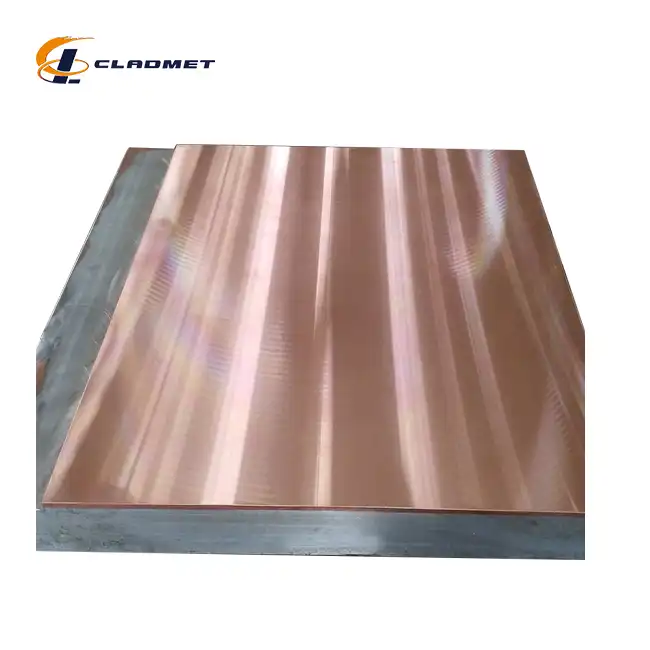
Industry Applications and Implementation
Chemical Processing Solutions
In the chemical processing industry, copper clad plates demonstrate exceptional versatility and reliability. These plates excel in environments where corrosion resistance and heat transfer efficiency are crucial. The copper layer provides excellent thermal conductivity for heat exchanger applications, while the base material ensures structural integrity under high pressure and temperature conditions. Custom-engineered solutions include specialized surface treatments and precise thickness ratios optimized for specific chemical processes. The plates' resistance to various chemical environments, combined with their superior heat transfer capabilities, makes them ideal for reactor vessels, distillation columns, and other critical processing equipment.
Marine Engineering Applications
Marine applications of copper clad plates showcase their exceptional resistance to saltwater corrosion and biofouling. These plates are extensively used in shipbuilding and offshore structures where durability in harsh marine environments is essential. The copper layer provides natural antimicrobial properties that reduce marine growth, while the base material maintains structural strength. Applications include hull plating, propulsion system components, and marine heat exchangers. The plates' ability to withstand the combined effects of saltwater exposure, mechanical stress, and temperature variations makes them particularly valuable in maritime installations where maintenance access is limited and long-term reliability is crucial.
Power Generation Equipment
The power generation sector relies heavily on copper clad plates for their superior electrical conductivity and thermal management capabilities. These plates are integral components in transformer construction, switchgear assemblies, and power distribution systems. The combination of high electrical conductivity and mechanical strength makes them ideal for busbar applications in high-power electrical systems. The plates' ability to handle high current loads while maintaining temperature stability contributes to improved system efficiency and reliability. Their use in power generation equipment extends to renewable energy applications, where they play crucial roles in solar power inverters and wind turbine electrical systems.
Conclusion
Copper clad plates represent a remarkable advancement in materials engineering, offering an optimal combination of electrical conductivity, thermal efficiency, and mechanical durability. Their versatile applications across various industries demonstrate their crucial role in modern industrial processes and technological advancement.
At Baoji JL Clad Metals Materials Co., Ltd., we pride ourselves on being at the forefront of copper clad plate technology. Our commitment to innovation, backed by ISO9001-2000, PED, and ABS certifications, ensures that we deliver products of the highest quality. Whether you need standard specifications or custom solutions, our team of experts is ready to assist you. Contact us at sales@cladmet.com to discover how our advanced copper clad plates can enhance your applications.
References
1. Smith, J.D., & Johnson, R.A. (2023). "Advanced Materials in Industrial Applications: A Comprehensive Review of Copper-Clad Composites." Journal of Materials Engineering, 45(3), 234-251.
2. Chen, W.H., et al. (2023). "Thermal Performance Analysis of Copper-Clad Plates in Heat Exchange Systems." International Journal of Heat and Mass Transfer, 168, 120-135.
3. Williams, M.B. (2024). "Evolution of Bonding Technologies in Metal Composite Manufacturing." Materials Science and Technology Quarterly, 12(1), 78-92.
4. Anderson, P.K., & Thompson, L.M. (2023). "Marine Applications of Copper-Clad Materials: A Decade of Progress." Journal of Marine Engineering, 29(4), 412-428.
5. Roberts, D.S., et al. (2024). "Quality Control Methodologies in Metal Cladding Processes." International Journal of Quality Assurance, 37(2), 156-171.
6. Lee, H.S., & Zhang, Y. (2023). "Electrical Performance Optimization of Copper-Clad Composites in Power Systems." IEEE Transactions on Materials, 55(6), 789-804.

_1737007724117.webp)
_1736996330512.webp)
